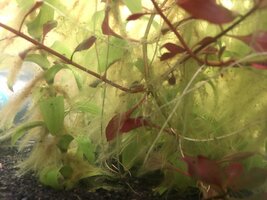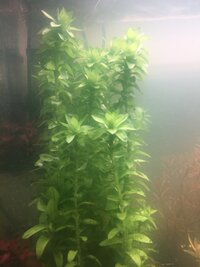An unrelated note, this picture illustrates really well the difference in tolerance/requirements for different plant species and how unhappy/unhealthy plants are like magnets for algae.

To the left is Bacopa caroliniana 'Colorata'. Excuse the strange color, it turns pink under high light but my light is currently moderate so its this funky color instead.
To the right is Ludwigia inclinata var. verticillata 'Pantanal'.
The Bacopa is like the Honey badger, it dont care. There is nary a speck of algae on this plant even though there are several fairly severe issues going on in my tank. Its pretty clear the plant is still well within its specific tolerance ranges, since it is growing relatively well and isnt attracting/spawning any algae. The Pantanal on the other hand is, to say it lightly, a demanding plant. The older leaves are completely wilted and have been eaten by the livestock, the second oldest growth is covered in BBA and the newer portion is covered in slimy green thread algae. The tip has stunted and the plant is trying to restart by making a new tip.
These plants grow right next to each other, get the same amount of light, flow, exactly the same ferts. One has a ton of algae and one looks perfectly content.
Some plants have really wide ranges of parameters where they will still thrive and do well. Some plants have super narrow parameter ranges or very specific demands.
If you keep a tank of only the first kind of plant then the odds of you running into issues will be much lower. Same for vice versa. A mixed tank will really highlight the differences between the species/varieties.
The algae is on the Pantanal and not the Bacopa for a reason. Healthy plants wont have algae on them.
Then its just the "simple task" (not) of getting all the plants you want to keep to a healthy place / a parameter range that suits everybody.
Thank you for coming to my TED talk
To the left is Bacopa caroliniana 'Colorata'. Excuse the strange color, it turns pink under high light but my light is currently moderate so its this funky color instead.
To the right is Ludwigia inclinata var. verticillata 'Pantanal'.
The Bacopa is like the Honey badger, it dont care. There is nary a speck of algae on this plant even though there are several fairly severe issues going on in my tank. Its pretty clear the plant is still well within its specific tolerance ranges, since it is growing relatively well and isnt attracting/spawning any algae. The Pantanal on the other hand is, to say it lightly, a demanding plant. The older leaves are completely wilted and have been eaten by the livestock, the second oldest growth is covered in BBA and the newer portion is covered in slimy green thread algae. The tip has stunted and the plant is trying to restart by making a new tip.
These plants grow right next to each other, get the same amount of light, flow, exactly the same ferts. One has a ton of algae and one looks perfectly content.
Some plants have really wide ranges of parameters where they will still thrive and do well. Some plants have super narrow parameter ranges or very specific demands.
If you keep a tank of only the first kind of plant then the odds of you running into issues will be much lower. Same for vice versa. A mixed tank will really highlight the differences between the species/varieties.
The algae is on the Pantanal and not the Bacopa for a reason. Healthy plants wont have algae on them.
Then its just the "simple task" (not) of getting all the plants you want to keep to a healthy place / a parameter range that suits everybody.
Thank you for coming to my TED talk



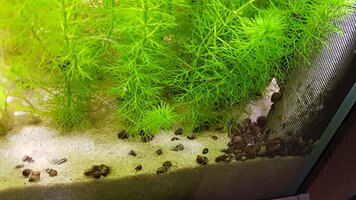
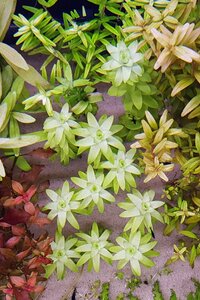
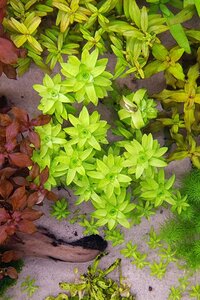
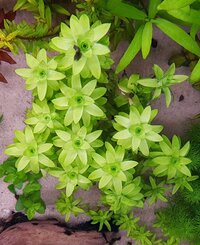
 ), since he previously had chlorosis issues but has now fixed them (by going very low). I imagine maybe I wont be able to dose quite as low as he does if there is any link between water hardness and micros needed, since he uses bespoke remineralization to RO water while I am using tap water with a little bit of hardness. I will also be very interested to see if his super low micro dosing continues to work now that he has switched to sand.
), since he previously had chlorosis issues but has now fixed them (by going very low). I imagine maybe I wont be able to dose quite as low as he does if there is any link between water hardness and micros needed, since he uses bespoke remineralization to RO water while I am using tap water with a little bit of hardness. I will also be very interested to see if his super low micro dosing continues to work now that he has switched to sand.